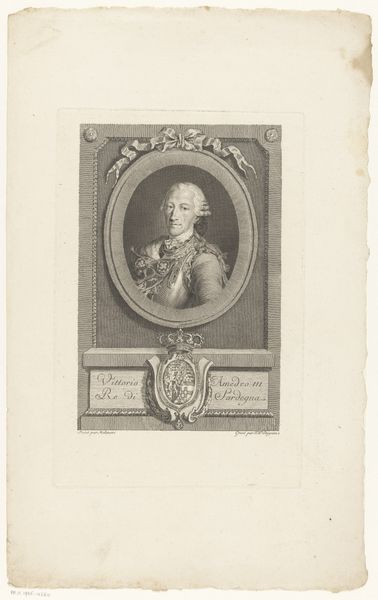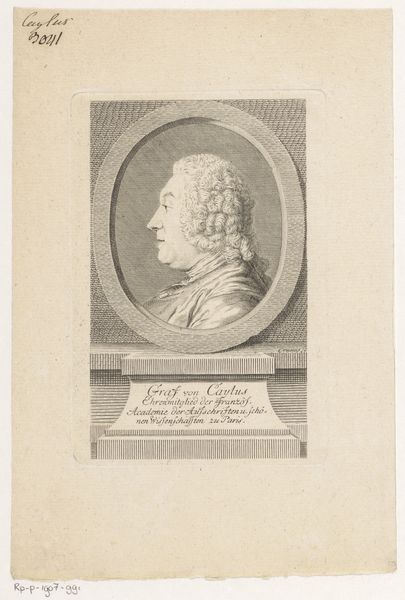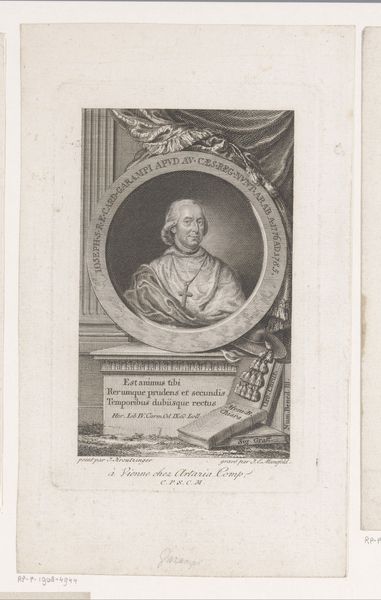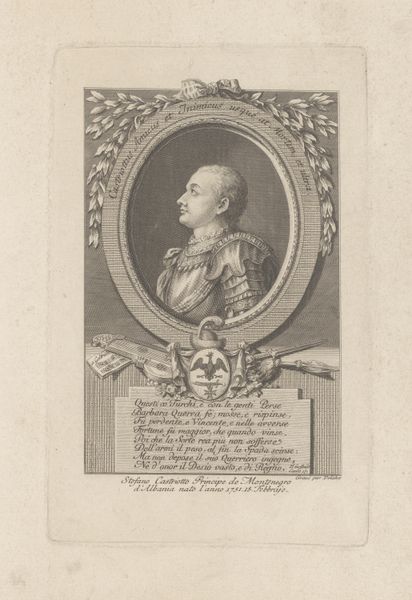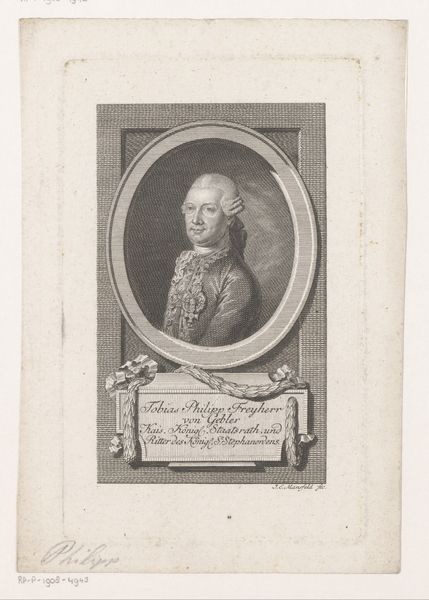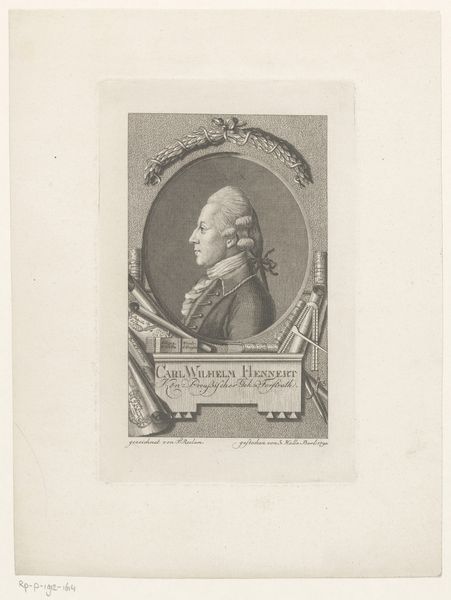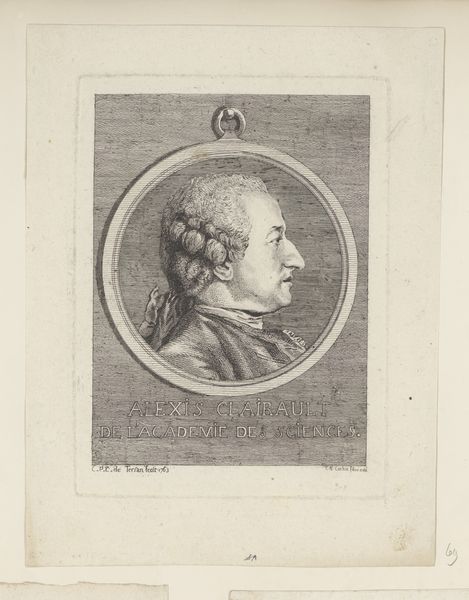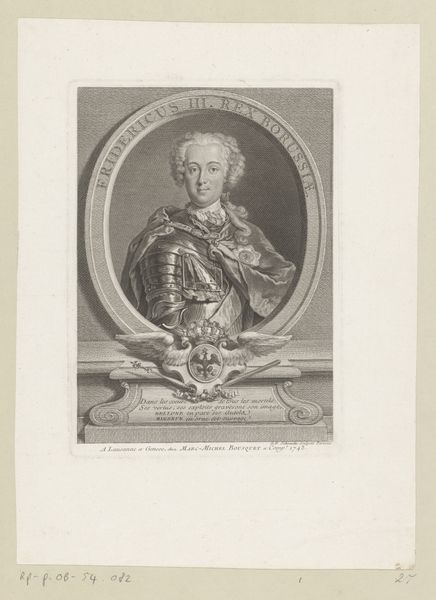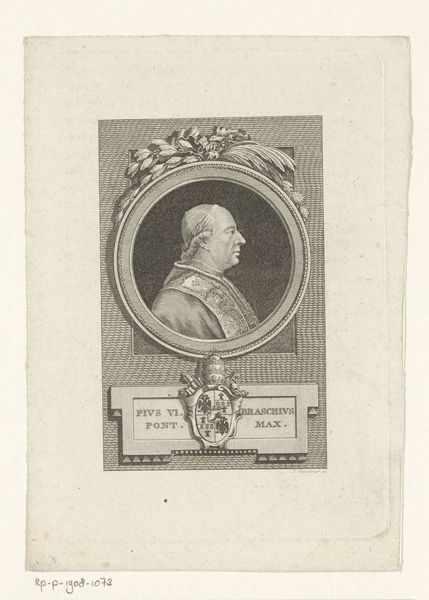
Dimensions: height 188 mm, width 123 mm
Copyright: Rijks Museum: Open Domain
Augustin de Saint-Aubin created this engraving of Claude Prosper Jolyot de Crébillon in France. Engravings like this one played a crucial role in shaping the cultural landscape of the 18th century. This was an era where printed images circulated widely and contributed to the formation of public opinion and artistic taste. Crébillon, framed by laurel and roses, is presented as a figure of importance. The inscription celebrates him as a philosopher. France at this time was a society defined by its rigid social hierarchy and elaborate court culture. The art world was closely tied to these social structures, with institutions like the Royal Academy playing a central role in dictating artistic standards. Prints could be subversive, however. They allowed for the relatively inexpensive dissemination of texts and images that were sometimes critical of the status quo. To truly understand this image, we need to delve into the print culture of the time, exploring the networks of artists, publishers, and patrons who shaped its production and reception. By examining archival materials, contemporary publications, and social histories, we can gain a deeper appreciation for the complex interplay between art, society, and institutions in 18th-century France.
Comments
No comments
Be the first to comment and join the conversation on the ultimate creative platform.
